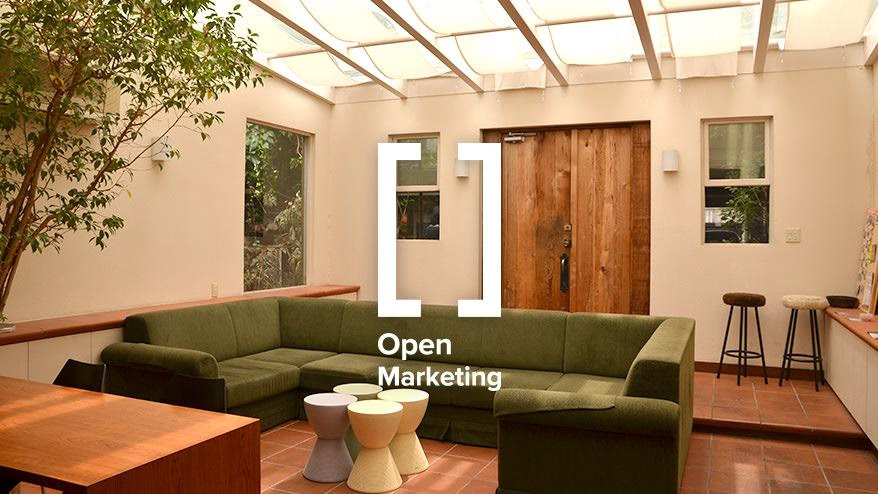Hello everyone. I am Hayashi, the representative of Monosus.
Last time , if you could get your customers to take the same actions as those who purchase frequently,
I talked about how you can make customers feel like, "I am a customer of this company."
This time, we're going a step further.
I would like to talk about some specific details.
Even if you say "make them take the same actions as customers who make frequent purchases,"
Depending on the product or service, it may be difficult to encourage multiple purchases in a short period of time.
A typical example is a house.
But buying isn't the only customer behavior.
It is necessary to be able to trace the behavior of customers who make frequent purchases, including their non-purchasing behavior as well.
First, let's analyze the behaviors and tendencies that are characteristic of regular customers.
The following five points are common to loyal customers:
- They use products and services that match their values and concerns
- Realizing the value of products and services
- Able to understand and talk about companies and stores
- High frequency of repeat behavior
- Accepts the company's communication rules
Today I would like to explain points 1 and 2.
1. I use products and services that match my values and concerns
In order to make customers regular customers, the minimum and most important thing is,
It's about customer and product fit.
Consumers who continue to spend their money and time on the wrong things
It's almost non-existent.
In the projects I have been involved in, I have analyzed how to increase the number of regular customers.
There is an interesting commonality between them.
"Loose customers fear that the products and services they use will disappear."
The points at which a product or service is accepted by customers are
It's called the benefit of existence,
Many of our loyal customers have continued to experience the benefits of our presence.
There is a disadvantage to non-existence in that "it would be a problem if the product or service disappeared."
Because our products and services are deeply embedded in our lives and lifestyles,
Not only do you feel the benefits of being there,
They tend to feel the disadvantages more keenly when they no longer exist.
"What will we do if that bakery closes?"
If you have had that feeling,
I'm sure you can understand.
Also, because I have been using it for a long time, I don't move my emotional needle every time to feel an exaggerated benefit to its existence,
It's like, "This is the usual..."
There is also a tendency to feel a sense of security.
The best example of this feeling is not available on the market, but
I think it's the taste of homemade food.
When we listened carefully to customers who felt the disadvantages of non-existence,
There is one other thing in common.
This means that as we continue our purchasing behavior, we tend to have similar experiences.
For hair care products, "I can really feel that my hair quality has changed"
If you work in the education industry, you will "realize that you have become a different person than you were before."
If you work in the medical field, you will feel that the symptoms you were suffering from have improved significantly.
These are the unique and essential experiences that a product or service can provide to its customers.
I call this the Core Experience and treat it separately from the other items.
Measures to retain customers are like a series of stories that draw customers into this Core Experience.
And to experience this Core Experience,
There needs to be a fit between customer and product.
In other words, this Core Experience allows customers to feel that the product and they are a good fit.
I realized that I began to feel the disadvantages of its absence.
The fit between customers and products is the foundation of Open Marketing.
I would like to explain this in more detail in the next issue.
2. They realize the value of the product or service
It may seem like a given when you put it into words, but
The truth is, most companies overlook this point.
In order for customers to actually "feel" the value of your products and services,
There are a few points to keep in mind.
Step 1: The customer understands the current situation and their needs
Step 2: Customers know how to experience value
Step 3: Customers continue to experience value
I would like to briefly explain each one.
Step 1: The customer understands the current situation and their needs
Customers often do not fully understand their own situation or needs.
This makes it difficult to get people to realize the value.
This is because it becomes impossible to compare the so-called before and after.
Either have the customer express their current situation and requests through interviews, or
We need to observe the current situation, communicate it, and have them recognize it in concrete terms.
Why do you use the service? What are your specific concerns?
How do you hope to resolve it?
Do the things your customers say really express their intentions?
It is important that the service provider not only understands these things,
As a result, it is important for customers to be self-aware.
Step 2: Customers know how to experience value
Of the three steps, I believe this one is the most important.
This is because, in many cases, customers are amateurs when it comes to judging services and products.
It's easy to understand if you compare it to taste,
Many people judge the taste of food and ingredients based solely on whether they like it or not.
Of course, that is sufficient, but for products and services where you want to add value,
That would be a problem.
If you simply leave the decision up to the customer, there is a risk that the true value will not be conveyed.
There is a reason for this.
When you try something you've never eaten before or are not used to eating,
Because customers don't know what to expect or how to taste it.
When I drink wine, I know it's delicious, but I can't explain it.
I bought some high-quality coffee beans, but I can't really tell the difference in taste.
This is something I am very familiar with,
This is not because they are bad at tasting, but because they don't know where to focus their senses to taste, and so are unable to make a judgment.
In other words, it's not that you can't taste it,
You miss the point of enjoying it.
Those with musical experience can listen to a singer on television and judge whether the pitch is correct, the pronunciation is good, and the delivery is beautiful.
People who are accustomed to watching soccer can easily judge what makes professional players good at playing the game.
So how can we help those who are not capable of making judgments to understand?
Some time ago, I was working on a project when I visited a fishing port to cover Akashi sea bream, a fish highly prized in high-end Kyoto restaurants.
After the interview at the fishing port, we went to a nearby restaurant.
I decided to actually try Akashi sea bream.
I have eaten wild sea bream a few times,
I have no confidence at all that I have the palate to distinguish between farmed and wild sea bream, especially Akashi sea bream, which is prized as a luxury item.
However, the owner of the restaurant told me the reason why wild sea bream is so delicious,
He gave me some tips on how to enjoy it.
Akashi sea bream in season is red in color because it likes to eat shrimp that live in shallow fishing grounds.
The thing about high-quality wild sea bream is that the fat shines differently when cut into sashimi.
Wild sea bream that has been killed while still alive tastes better the day after it is caught rather than the day it is caught.
And when you put it in your mouth, where should you focus your senses to enjoy the aroma of sea bream?
It was then that I was able to appreciate for the first time the deliciousness of wild Akashi sea bream.
In particular, the last point, "Where in your mouth should you focus your senses?"
It was important that I was given specific information beforehand about what the aroma of Akashi sea bream is like.
So, even I, who have never eaten wild sea bream,
I was able to judge the taste of Akashi sea bream.
Although this is a familiar example, it can be said that there are many different products and services that have something in common.
- Many customers judge value based on personal guesswork
- As a result, value is not properly recognized.
- On the other hand, if you tell them specifically how to feel the value,
Many customers can make decisions in a short period of time
That is what it means.
Step 3: Customers continue to experience value
Even if you properly explain how to experience the value in Step 2,
In reality, it is not always the case that customers continually experience value.
For example, for luxury hair treatment products,
If you do not use it correctly, it may not be effective.
Is the pre-shampoo method correct?
Do you use it on dry hair or when it's slightly damp?
If using multiple hair conditioners, which one should be used first?
You may have used an appropriate amount at first, but then reduced the amount because you felt it was wasteful.
Are you damaging your hair by using the hair dryer too much?
Conversely, have you left it half-dry?
If these things don't work together properly, you won't get the desired results.
If we ignore these things, we will end up not feeling the value of them because we use them incorrectly, and we will not get the satisfaction we should be getting.
What you need to pay attention to here is that
I need to explain in advance how to realize the value of Step 2.
As we have purposely separated this into Step 3, many products and services
Once the service has started, it is necessary to check and adjust again, focusing on whether the customer is using it correctly.
When you first use it, the company will provide support,
The customer should also follow the instructions as straightforwardly as possible.
And because customers themselves are focused on the product, they can easily feel the value.
After two or three sessions, the focus on realizing the value fades.
At the same time, the customer's own behavior deteriorates from the first time,
Satisfaction levels also decrease.
I have explained how to help customers realize the value of your products in three steps. The key points are:
"You can't leave it up to the customer to realize the value."
That is what it means.
If we leave it up to the customers, only a select few who are able to judge value will be able to experience it.
As a result, many customers will leave without realizing the true value of your company.
Today, as the first part of the article, I would like to introduce 5 points common to regular customers.
I talked about two points.
Next time, I would like to talk about the remaining three points.
See you next month!

